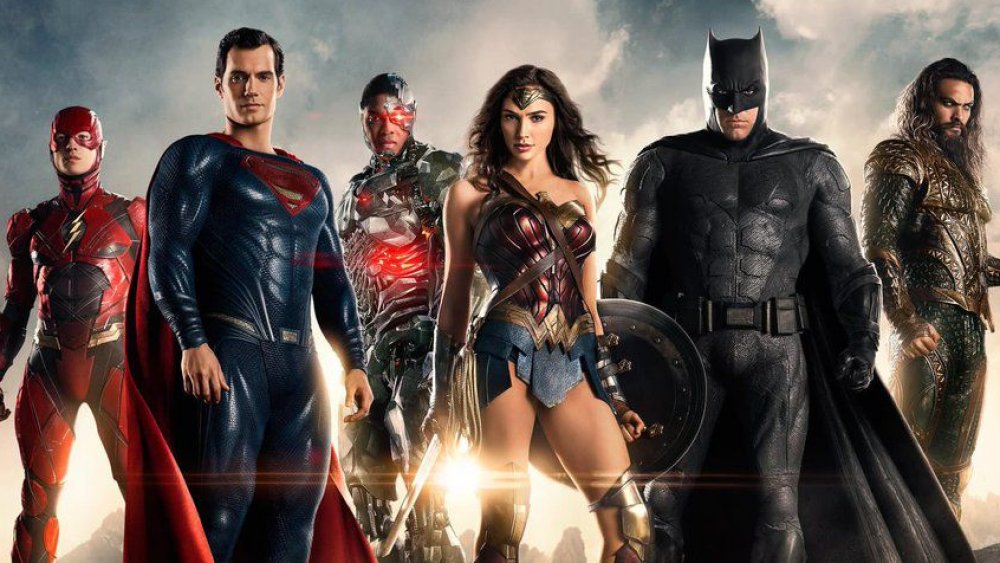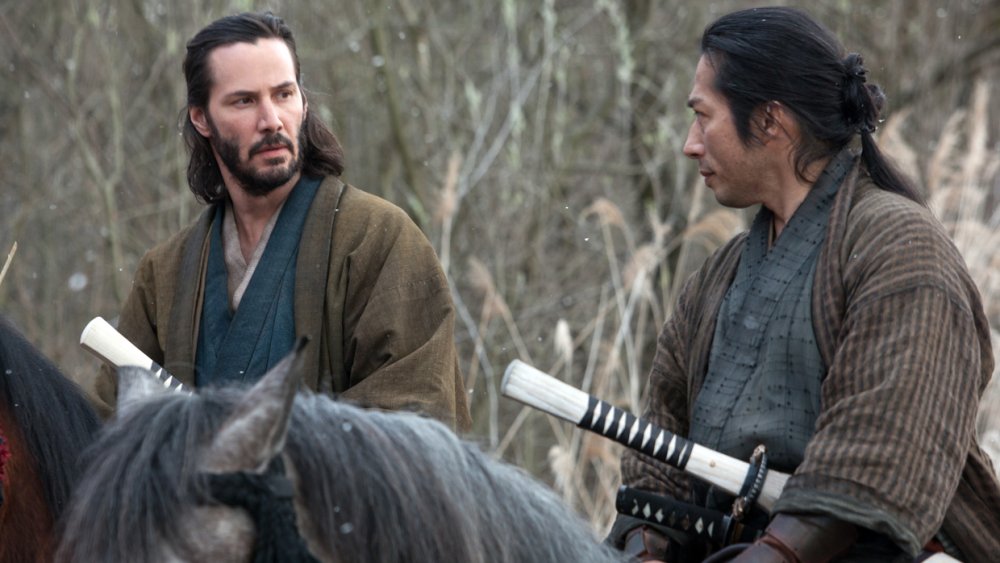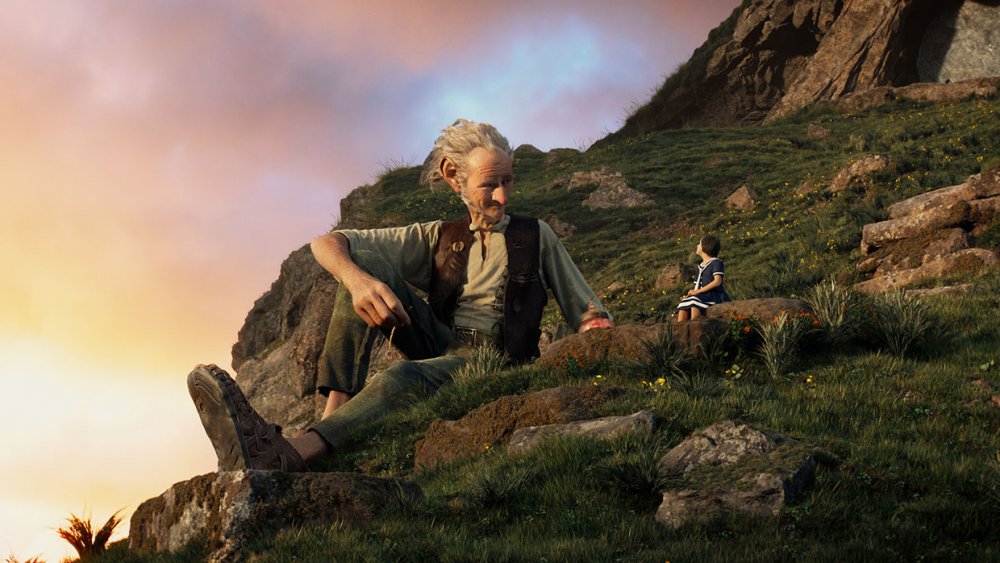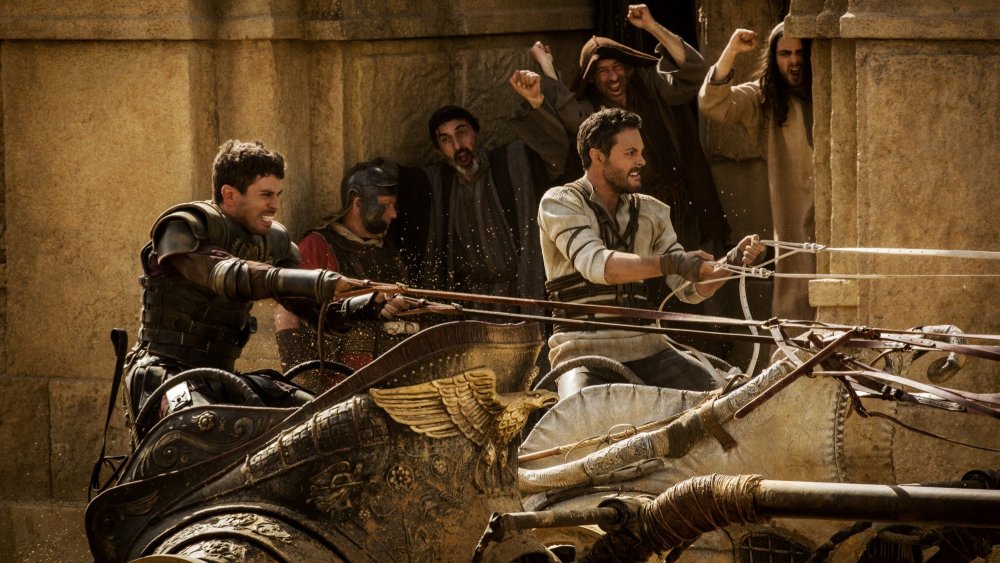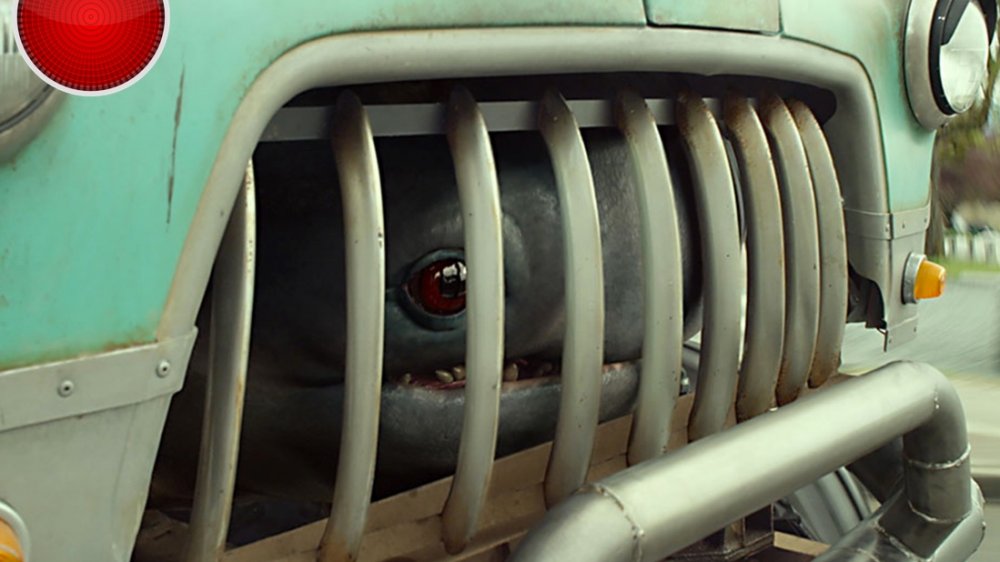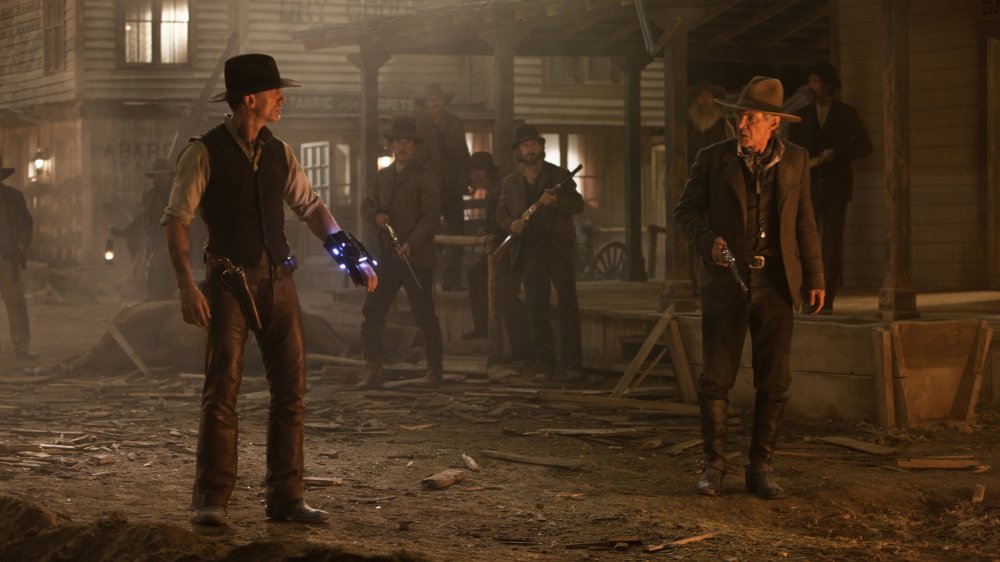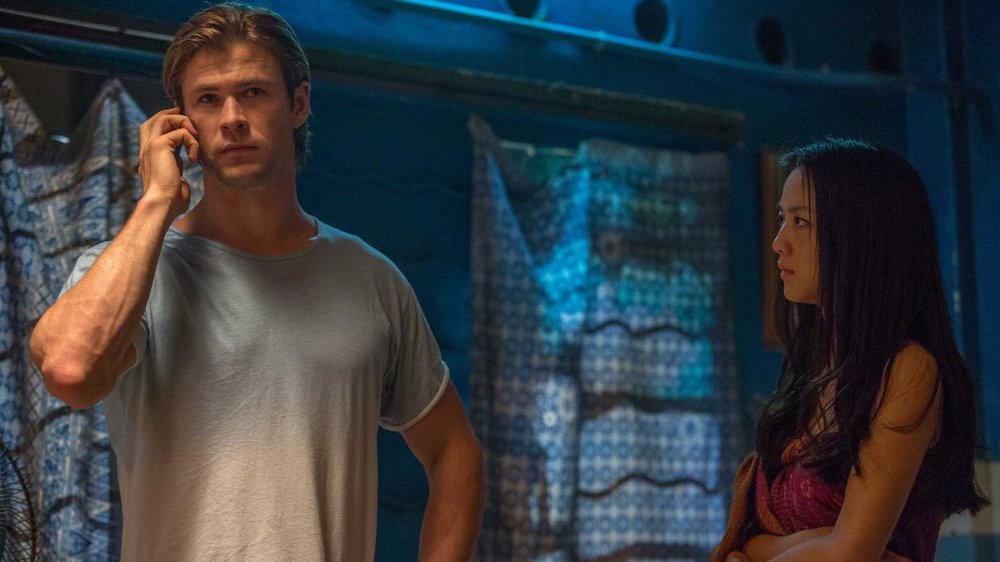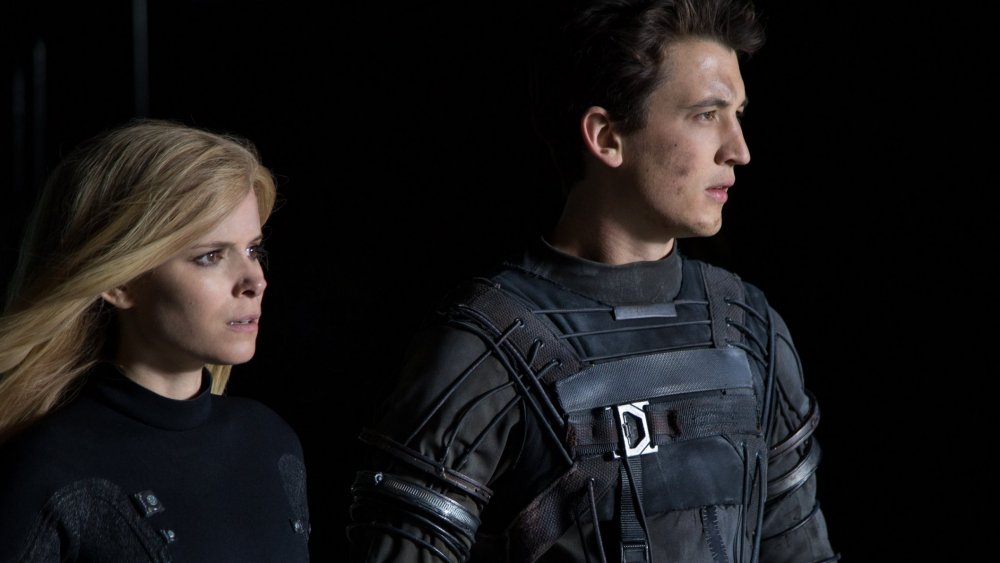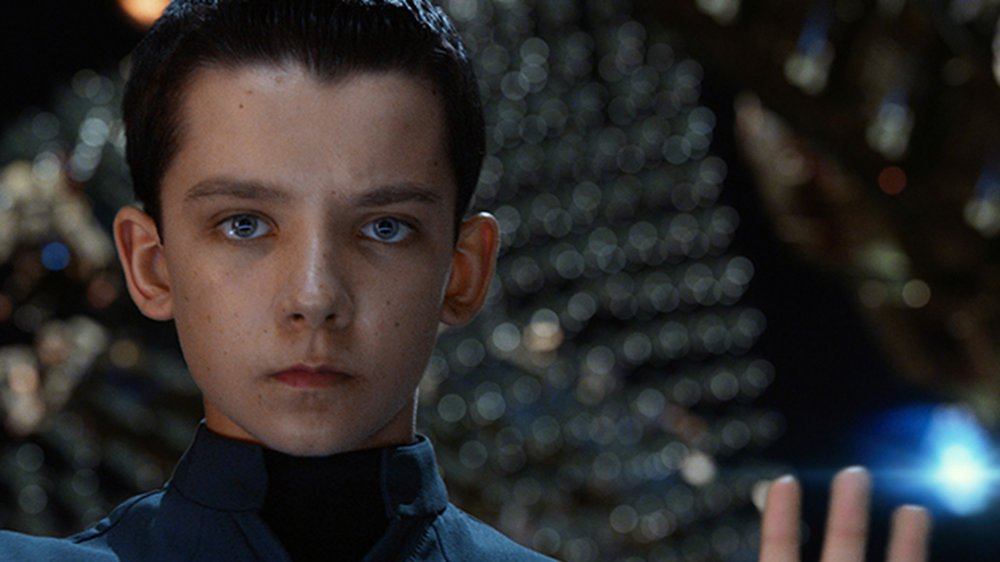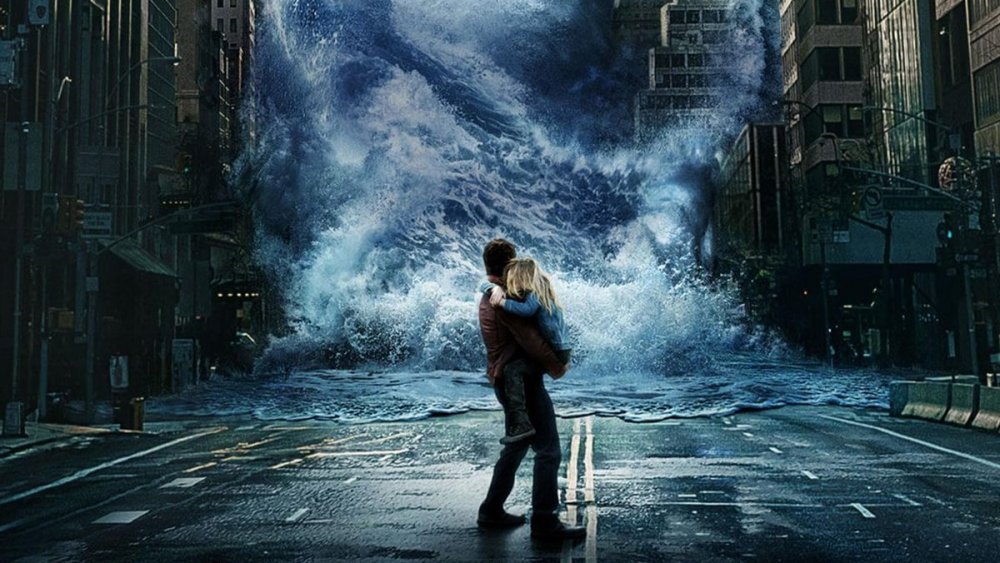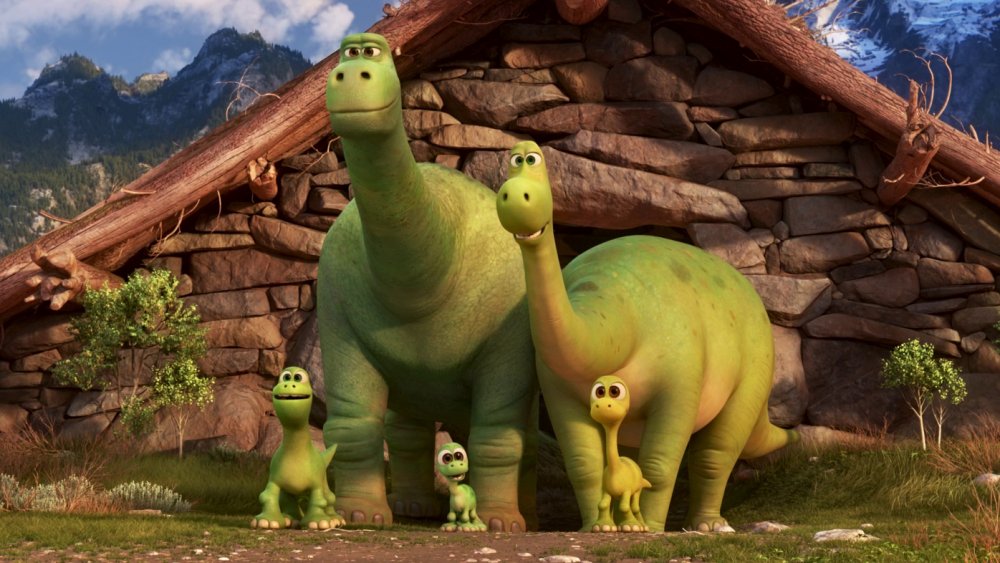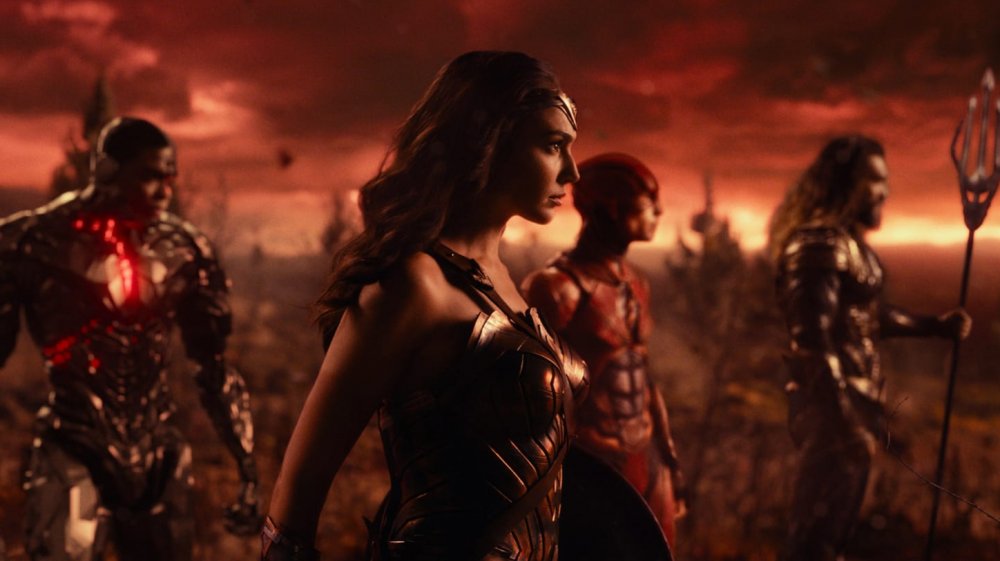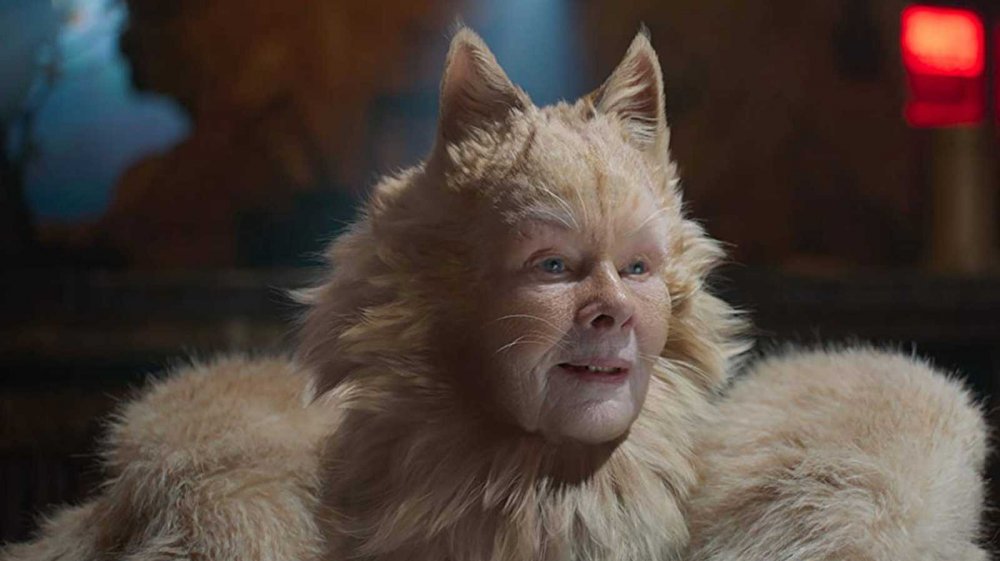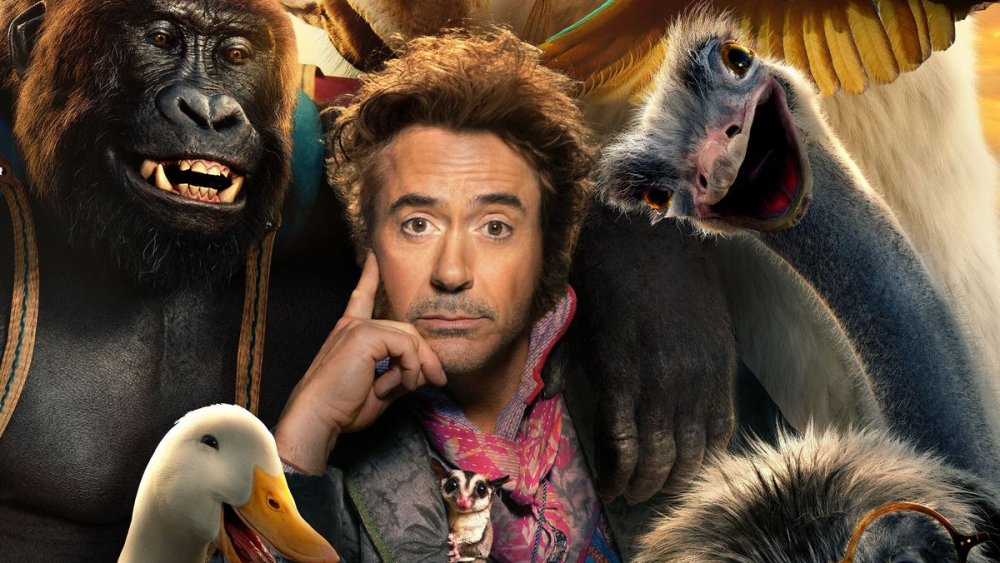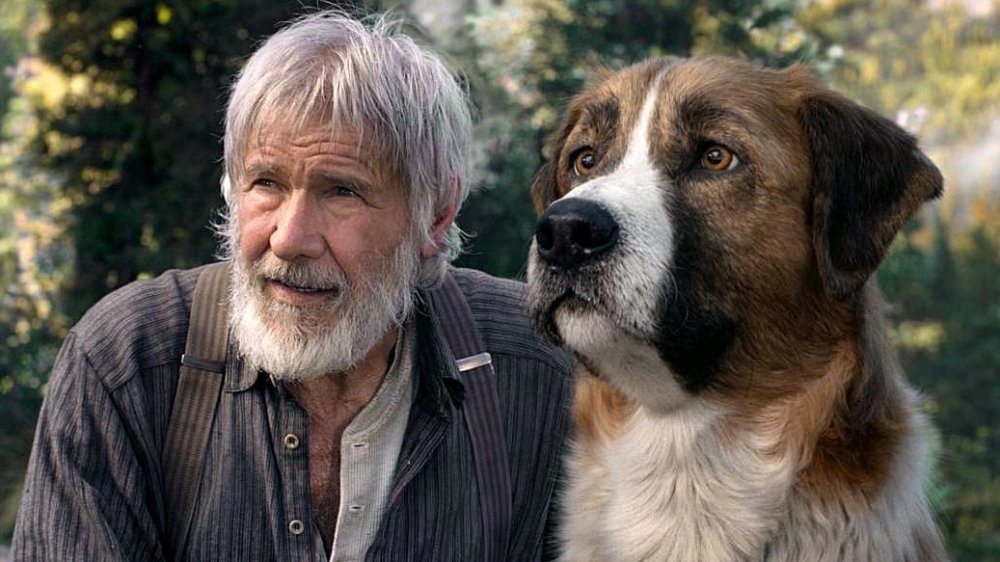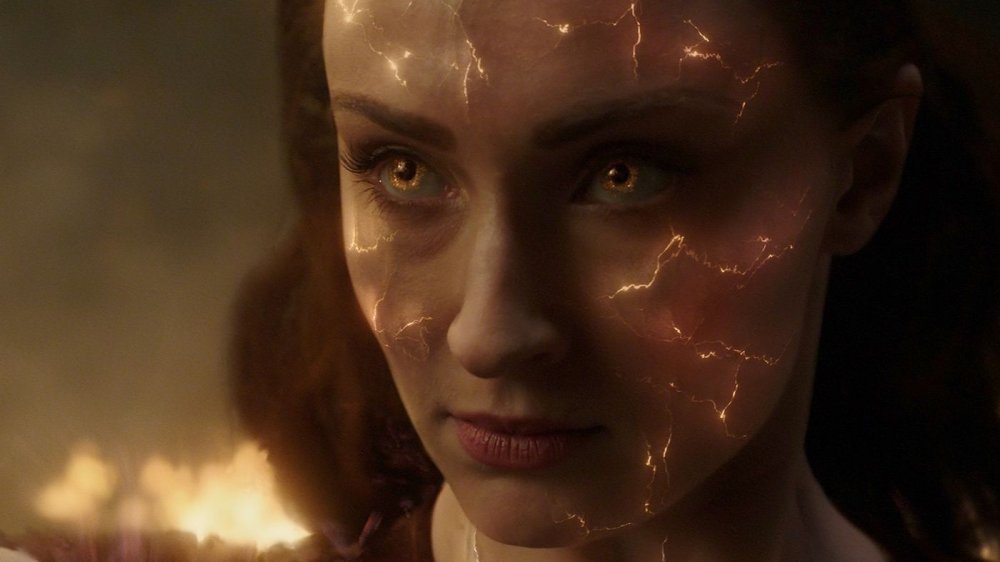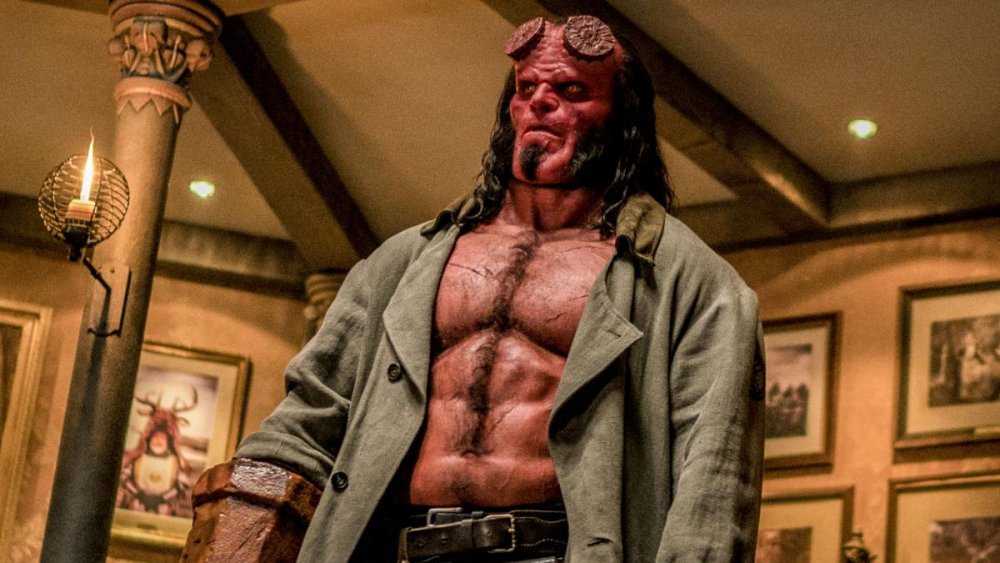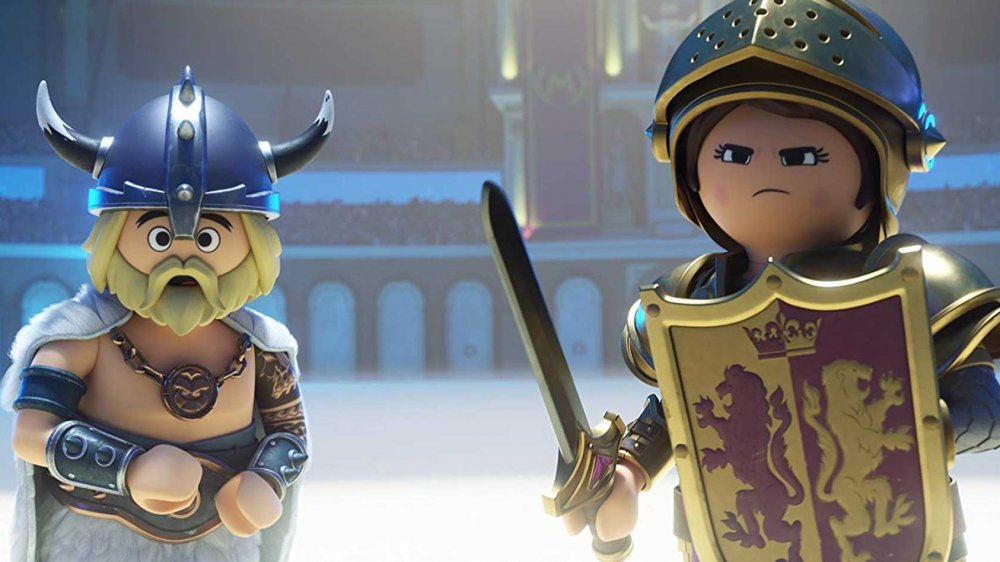The Biggest Box Office Bombs Of The 2010s
Hollywood might be an empire of dreams, but it still needs to pay the bills. Each and every production is subjected to a rigorous gauntlet of financial judgments, from the cost of costumes to the price of craft services. The money can be huge — movie stars are rich for a reason — but as the numbers go up, so does the risk involved. For every Titanic, there's a box office bomb like Battlefield Earth, and the failures leave just as indelible a mark as the successes.
This decade saw quite a lot of silver screen success. The Marvel Cinematic Universe grew from an intriguing idea into the industry's reigning kingdom. Disney princesses sailed to prominence once more on Elsa's icy tide. Star Wars entered the fray with a bold new vision of interplanetary adventure. But it wasn't all lightsabers and "Let It Go. There are abject trainwrecks to be found in the 2010s as easily as there are fairy tales. Join us as we plumb the murky depths of the decade's biggest box office bombs, from the superhero slip-ups to the animated atrocities.
47 Ronin was defeated at the box office
Directed by Carl Rinsch, 47 Ronin arrived with an impressive pedigree. This Keanu Reeves action movie wasn't just an adaptation of a real-world historical event, in which 47 masterless samurai avenged the death of their master, Asano Naganori. Instead, it was merely one of many adaptations of that very same event, often referred to as the Ako Incident. The story of the steadfast 47 ronin is so beloved, in fact, that renditions of it have their own name. They're called Chushingura (which means The Treasury of the Loyal Retainers). So 47 Ronin didn't just have a cool story, it had centuries of proven success as everything from a ballet to a puppet play. As far as movies go, that's about as safe a bet as you get.
And yet it tanked. The movie failed on basically every front that mattered, opening ninth in the US and doing absolutely dismally in Japan. There are many reasons as to why, with the most obvious being the decision to insert fantasy elements into the tale. In retrospect, this is the most baffling choice. Did a story already beloved for being about awesomely talented warriors out for blood really need CGI fox people? Hollywood thought so and suffered for it. Add in wooden acting and a script that's more slog than jaunt, and 47 Ronin ended up losing Universal an estimated $175 million. It just goes to show that there are no sure things when it comes to movies, especially when you cram a classic story of 18th-century heroism full of dragons.
The BFG was gigantic bomb
Roald Dahl has generally provided Hollywood with winning source material. Charlie and the Chocolate Factory has been the basis for two popular films, James and the Giant Peach is a stop-motion delight, and Matilda is a touchstone for '90s kids everywhere. Yet somehow, The BFG, as beloved as any of his other stories, flopped like a giant off a diving board. Having Steven Spielberg at the helm didn't save it. Garnering generally positive reviews didn't help. It was a box office bomb in spite of it all, leaving a trail of questions in its wake. How did a spectacle of this nature manage to bring in $18.7 million over its opening weekend? How did its final gross of $183.3 million only barely clear its budget of $140 million? Why weren't audiences raised on similar Dahl adaptations lining up for this one?
Answers are few, but the lack of any truly compelling star is notable. One wonders, too, if Spielberg has simply lost his touch when it comes to children's movies. Though his 2011 The Adventures of Tintin made an impressive amount of money and received largely positive reviews, it hasn't entered the canon of the best Spielberg movies in any substantive way. It was fun, but not monumental. Seen in contrast, The BFG feels like a further slide down that hill. The BFG is a fine film, but it's not an event, and audiences chose to spend their money elsewhere. At least there's always Matilda.
Ben-Hur couldn't live up to its predecessor
Does any movie encapsulate Hollywood magic more than Ben-Hur? The 1959 classic might not have been the only adaptation of the 1880 novel, as it was preceded by silent productions from 1907 and 1925, but it quickly became the best known. To read the behind-the-scenes stories is to glimpse the heights of movie-making. To watch it is to see grandeur itself. Any follow-up had enormous shoes to fill, but because of its impressive pedigree, perhaps people would show up to relive Hollywood's glory days. The chariot race with modern technology? Who wouldn't pay to see that?
Lots of people, it turns out, since 2016's Ben-Hur was a disappointment as huge as its legacy, bringing in dismal reviews and an utterly anemic box office. Critics derided it as unoriginal, attempting to paper over its uninspired retelling with flashy special effects (effects so frenetically cut they were nearly impossible to appreciate). Worldwide, Ben-Hur brought in a paltry $94 million, less than half of the estimated $250 million the film needed to break even. The 1959 Ben-Hur continues to reign as the supreme incarnation of the tale, with the 2016 adaptation serving as one of the most disappointing remakes of all time and representing a low point in Ben-Hur's history.
Monster Trucks was one of decade's weirdest flops
Ah, to be a boy discovering the joys of his first car. It's a classic American story to be sure, encapsulating everything from creative drive to personal freedoms. Similarly beloved are stories about boys and their dogs. After all, they're friends across the lines of species, forging an understanding all its own. You know what else people enjoy? Weird monsters, especially when it comes to movies. So hey, was Monster Trucks really such a bad idea, given that it combined all three of these well-worn tropes into a movie about a boy and the subterranean creature who uses the shell of a pickup truck as a makeshift exoskeleton? Theoretically no, but practically, very much yes.
Monster Trucks had a long, strange trip to the theater, beginning as the first entrant into a live-action/animated franchise that ended up evaporating, then having its release date shifted multiple times. By the time it premiered, Paramount was already expecting to lose money, and oh boy, did it ever. Reviews were unkind, and the worldwide gross only cracked $64.5 million. Monster Trucks, for all its seemingly safe bets, finished behind horror trainwreck The Bye Bye Man over 2017's MLK weekend, meaning that even four full days off work couldn't entice the masses to give it a shot. People might love stories of boys and their trucks, dogs, and aliens, but that doesn't mean they want them all at once.
Cowboys & Aliens disappointed sci-fi fans
Take a moment to really let the concept of a movie entitled Cowboys & Aliens sink in. Not only could that be the title of a film that absolutely rules, it has a good degree of flexibility. The on-the-nose nature of it allows for a winking sense of fun that endears but doesn't threaten the central spectacle of, well, cowboys and aliens. Add in Daniel Craig and Harrison Ford and, well, you've got yourself a solid film. Yet none of that mattered. Cowboys & Aliens was genuine flop from its lackluster opening day.
What went wrong? Reviews weren't terrible, but their middling nature reveals the film's fatal flaw: A movie called Cowboys & Aliens really can't afford to play it safe. Though some reviewers felt the film's insistence upon playing its absurd premise straight was a strength, more found it to be a choice that hamstrung the production from the get go. Ultimately, there are better cowboy movies, better alien movies, better Daniel Craig movies, and better Harrison Ford movies. The fact that the film barely cleared its $163 million budget with a worldwide total of $174.8 million, isn't much a surprise, nor the fact that years later, its absence from discussion of the decade's best science fiction is absolute.
Blackhat couldn't hack the box office
Spies! Digital intrigue! Chris Hemsworth! An international cast! Blackhat boasted an absolute plethora of talent, story hooks, and general dazzle. It follows Hathaway (Hemsworth), a brilliant hacker broken out of prison to track down the bad guys who use the code he wrote as an MIT student to wreak havoc. The film promised sleek cool, a leading man wielding worldwide fame as the MCU's Thor, and a twisty, thrilling plot. Its reviews weren't great, but they weren't the kind of execrable that keeps audiences from bothering with a cool-enough enterprise. And Blackhat really should've been cool enough. What went so wrong that it opened in 11th place, earning only $19.7 million against a budget of $70 million?
The leading theory is that Blackhat was dragged into obscurity by its weak marketing. Independent tracking services surmised that "total awareness for Blackhat was in the 40-50 percent range," a massive difference between it and its competitor, the unstoppably popular American Sniper. Moreover, Blackhat sold itself as an action flick first and foremost — a strategy that failed to net the young viewers sought — and it misrepresented its central romance and complex plot. Blackhat was yanked from most theaters only two weeks after its release, cementing it as a legendary failure. Alas, we hardly knew it, but maybe that was for the best.
Fantastic Four wasn't so fantastic
Superheroes are omnipresent, and Marvel is the goose that laid the golden eggs ... for the most part. Consider the Fantastic Four, long a cornerstone of the Marvel Comics universe. Their movies, historically, haven't amounted to much, with the 2005 film being the high-water mark as a good-enough jaunt that brought in good-enough money. But the team was owned until recently by 20th Century Fox, and it was thus consigned to a 2015 reboot meant to compete with the dominant MCU. This needn't have ended in failure. For example, despite glaring missteps like Dark Phoenix, the X-Men movies have done okay on their own, but oh, how enormously did FANT4STIC, as it styled itself, fail.
Why? It was terrible, for one, as dour as it was overcomplicated. Fantastic Four felt most like the sort of adaptation a 14-year-old might make upon being mocked for liking comic books, desperate to prove that he isn't a baby. Add in lopsided pacing and a convoluted plot, and you end up with the lowest-grossing Fantastic Four film of all time, a movie that lost the studio an estimated $100 million. Will the MCU revive the fabulous Four? Fans can only hope, and try desperately to forget 2015's massive mistake.
Ender's Game couldn't draw an audience
Orson Scott Card's 1985 novel, Ender's Game, has been a classic for decades. How many thousands of people found their footing in the world of science fiction through Ender Wiggins' story? How many recall the shocking ending as one of the greatest literary twists of their lives as readers? The numbers are untold, but the impact is clear. A movie based on Ender's Game was primed for success.
Somehow, however, 2013's Ender's Game was a dud. Despite the wealth of marketing tie-ins, a script for a sequel ready to go, and some pretty solid reviews, the movie grossed a mere $125 million, only barely clearing its $110 million budget. The reasons for this failure are more opaque than other, similar bombs. Ender's Game was solidly entertaining, visually engaging, based on a celebrated book, and released for a public that couldn't get enough of teen dystopias. It seems that the movie was simply less than the sum of its parts, perhaps a bit too late to the young adult franchise fad, maybe a bit too old in its source material to intrigue today's audiences, and likely biting off a bit more than it could chew, story-wise. What's certain is that it failed, and fans will have to content themselves with Ender's adventures on the page for the foreseeable future.
Geostorm was one of the biggest disasters of the decade
For a species honed by years of evolution to survive against all odds, humans sure do love seeing themselves in mortal peril. Consider disaster movies. They're explicitly centered around watching people die at the hands of forces too huge and unknowable to ever control, and the genre is one of our most beloved. Some come as a result of man's overreach, like Titanic, while others, like Twister, are merely the wrath of the winds themselves. Geostorm combined these approaches by imagining a global cataclysm created by malfunctioning satellites that humanity, in their hubris, installed to control the weather. Hail batters Tokyo, Rio freezes over, and on and on it goes, taking the audience on a tour of worldwide destruction.
Critics ripped it apart, and with good reason. Geostorm is remarkably boring for a movie of such gargantuan proportions, lacking even the jaw-dropping visuals that are the entire point of the genre. And he humans are nothing to write home about. A more impressive disaster film would make that forgivable, but when the audience isn't gasping at the feats of computer imaging, they're going to notice hackneyed character-writing a lot more often. Though many a critically derided movie of such spectacle has gone on to make money, Geostorm didn't even accomplish that. It's estimated to have lost Warner Brothers $71.6 million. It might've destroyed the cities of the world on-screen, but Geostorm made only the barest ripple in the world of cinema.
The Good Dinosaur was one of Pixar's few failures
Pixar is as close to a watchword for quality as the movie industry gets. Toy Story, Up, Coco, Inside Out — only a handful of the studio's slate, yet each and every one a bonafide classic. They were centering superheroes before Marvel brought spandex back into vogue, making monsters lovable years ahead of Monster High, and introducing kids to pastoral French cooking before ... well, they're still ahead of the pack on that one. Pixar doesn't just innovate, it sets the standard for everyone, then moves on, ready to conquer even more territory in the emotional landscape of its vast and varied audience.
But no enterprise is immune to the occasional mistake. Enter The Good Dinosaur, Pixar's tale of an Apatosaurus and his boy in an alternate Earth where dinosaurs never went extinct. It's got all the conceptual charm of a Pixar knockout, from the unlikely friendship to the early heartbreak that must be surpassed. But something was missing. The reviews weren't bad, but they weren't quite up to Pixar's usual standard, and the box office followed suit. The film only made $332.2 million, remarkably short of the film's $350 million marketing and production budget. Perhaps part of its failure can be chalked up to Inside Out being released a few months prior or the extensive revisions the film underwent on its way to release. Regardless, The Good Dinosaur remains somehow lacking, the also-ran beside its all-star siblings.
Justice League was a bomb of superhero proportions
Justice League debuted at an odd moment for DC. The studio's struggles to produce a decent film had not yet been eclipsed by the successes of Shazam! and Joker. Only Wonder Woman had managed to impress critics and bring in cash. Marvel's empire was growing ever more massive, what with Taika Watiti taking Thor out for an intergalactic spin and the first trailers being dropped for the phenomenon that would become Black Panther. Justice League had to be a mission statement and a course correction, all the while introducing the Flash, Cyborg, Aquaman, and the Fourth World, from which its villain sprang. The fact that it disappointed isn't surprising in light of this, but it doesn't mean it stung any less.
In retrospect, Justice League never had much hope of recouping its production budget (let alone marketing). At $300 million, it's one of the most expensive movies ever made. It needed to bring in at least $750 million to break even, but not even that benchmark could be cleared. Its worldwide gross landed at $657 million. Reviews were middling, which was better than what, say, Batman v Superman: Dawn of Justice got, but still not enough to send the world to the cinema in droves. Freighted with expectations, Justice League chugged forward as best it could. But in Hollywood, one's best isn't always good enough, even when it features Batman.
Cats made everyone uncomfortable
You gotta hand it to Cats — it failed, but it failed big. This surreal glimpse into the world of London's feral felines did nothing by halves. Its cast includes Judi Dench, Ian McKellen, and Jennifer Hudson. Its visual design packs every inch of the screen with glitter, fur, marble, and gilt, and it doesn't sand down the weirder edges of the Tony-winning production it adapts. This is a musical about a bunch of cats competing for the chance to die via magical chandelier. It features a scene in which Taylor Swift drugs the cast while doing a burlesque number about Idris Elba's alluringly tangled whiskers. The CGI makes its cast look as though they were painted with glue, then told to roll around a rug shop's disused back room. Is it terrible? Absolutely. Is it forgettable? No way. Once you watch Rebel Wilson eat tap-dancing cockroaches with human faces, you carry it with you for life.
Cats made headlines for its execrable reviews, egregiously slapdash CGI, and utterly bonkers story. While infamy is better than obscurity, it doesn't ensure a profit. Cats made only $73 million on a $95 million budget. Some have predicted the film will become a cult classic, and perhaps it will — certain independent theaters have already hailed Cats as "a startling and unexpected new midnight movie sensation." Until that legacy is ensured, however, Cats will be known as one of the most legendary flops of the 2010s.
Dolittle was a walk on the wild side no one wanted to take
Dolittle has a lot going for it — a beloved story, a star-studded cast, and Robert Downey Jr. in his first post-Avengers: Endgame role. But trouble emerged early for this unfortunate fantasy film. Poor test screenings resulted in days of re-shoots, frenzied writing, and an altered title. However, the problems plaguing Dolittle are deeply rooted and resistant to such paltry attempts at pruning. The critics tore the film apart upon arrival, condemning it for its confusing script, limp humor, frantic editing, and ultimately lifeless tone. Animation enthusiasts decried its lackluster CGI. Everyday viewers found its jokes off-puttingly crude. No one, it seems, likes the movie that should, by all accounts, be a solid crowd-pleaser.
Thus, Dolittle sank into the depths of box office bomb-hood, earning $245 million on a $175 million budget — miles away from the $500 million it needed to earn to break even. It just goes to show, you can stuff a movie full of beloved faces, lavish funds on its animation, and scramble to re-do it when it tests poorly, but you can't actually guarantee its success.
No one answered The Call of the Wild
Even in this age of touch screens and contactless delivery, wilderness has a way of stirring the soul. The Call of the Wild aimed to capitalize upon this. An adaptation of Jack London's beloved 1903 novel of the same name, it tells the story of a dog named Buck, who journeys across the Yukon wilderness alongside an old frontiersman played by Harrison Ford. Take a moment to absorb the solidity of that bet. This is a movie starring one of cinema's most celebrated leading men, derived from a beloved book, featuring a heroic dog. That's a movie made to become a beloved fireside classic if ever there was one.
But The Call of the Wild sledded straight into a snowbank of abject failure. Though reviews were solid (if not spectacular), the film ultimately pulled in just $107 million on a $135 million budget. No one, it seems, cared to spend a chilly afternoon in the company of a sled dog and his grizzled master, no matter how much they might love Han Solo or Marley & Me. Perhaps the film's pushed-back release date had something to do with this failure. Originally intended to debut on Christmas Day, The Call of the Wild was pushed to February 21, 2020. Perhaps the onset of the COVID-19 pandemic roughly a month later hurt its long-term chances. Whatever the reason, audiences gave this film a shoulder more cold than its snowy setting.
Dark Phoenix didn't rise from the ashes
We're living in the age of the omnipresent superhero. This era doesn't appear to be in danger of winding down anytime soon, nor is it staying confined to the multiplex. Caped do-gooders are on our TVs, in our video games, and of course, filling the pages of comic books. A superhero movie failing abjectly seems like an impossibility right now — especially when said movie features beloved characters with decades of stories to their name. And yet that's exactly what happened with Dark Phoenix, the X-Men's most disappointing adventure to date.
Adapted from the legendary "Dark Phoenix Saga" arc of the X-Men comic series, this movie does a whole lot of crumbling into ash but very little rising from the flames. Critics excoriated the film for its ho-hum story, disengaged performances, and hacky script, to the point that writer-director Simon Kinberg owned up to the film's failure. Audiences — so eager to flock to Avengers: Endgame, The Incredibles 2, and Aquaman – stiffed Dark Phoenix like they'd never even heard of Magneto or Professor X. The film made $252 million on a $200 million budget, ensuring a $133 million loss. There is, at least, a bright side for disappointed X-fans. They have an MCU future for their favorite mutants to look forward to.
Hellboy was snuffed out
As rumors began to swirl about a new Hellboy movie, fans rejoiced. Guillermo del Toro's Hellboy movies have cemented their place within a variety of canons as the years have passed. As superhero flicks, Guillermo del Toro films, and dark fantasy movies, they set the stage for some of the biggest cinema success stories of the past few decades. But just as soon as these happy whispers started to build, they began to quiet. Del Toro, it turned out, would not be directing this new Hellboy film, and Ron Perlman, who'd previously played Hellboy to much applause, wasn't signing on without the Oscar-winning director at the helm. So instead, Neil Marshall and David Harbour stepped up the plate, meaning while this would be a Hellboy movie, it wouldn't be one that fans recognized.
Perhaps, in the hands of a different team, a bloody, no-holds-barred take on Hellboy's story might've worked. In this universe, however, it made for a miserable slog of a film. It's not just that Hellboy feels like it's trying too hard — though that's a big, awful piece of the putrid pie — it's that this Hellboy is boring. It has Baba Yaga, Arthurian witches, and the apocalypse, and it's boring. Audiences barely trickled in to yawn through this snoozefest, and Hellboy only managed to make $44 million, significantly short of its $50 million budget. Take heart, Hellboy fans. You'll always have the other movies and Mike Mignola's gorgeous comics.
Playmobil: The Movie is a jumbled toybox of bad ideas
Did you know there exists a Playmobil movie? No? Neither does anyone else. It's not hard to perceive the logic of this movie. The Lego Movie made millions, so why wouldn't a Playmobil effort enjoy similar success? Kids are plenty into the popular German toy line, and the prospect promises a seamless and theoretically lucrative movie-to-merchandise pipeline. Indeed, all the blocks of success were lined up for Playmobil: The Movie, with nary a piece missing — except for a good script. Oh, and decent performances. Also, the film's worldbuilding was suspect, and the Playmobil figures had an oddly human range of motion, and the whole thing felt more like a commercial than a coherent, emotionally driven story.
Okay, so Playmobil: The Movie had a lot less going for it than it might've seemed. But those illusions could endure, for a while — especially since any pre-emptive skepticism could be met with the success of The Lego Movie. But while naysayers were wrong in expecting that film to feel like a cash grab, their cynicism was proven utterly correct by Playmobil. This stinker of a film earned only $16 million, setting a brutal record as the fourth-worst opening ever for a film playing in 2,000-plus theaters. There it molders beside the likes of The Oogieloves in the Big Balloon Adventure, as far as a movie could possibly get from the spectacular success of The Lego Movie.
The Goldfinch never took flight
Movies based on literary fiction aren't guaranteed to bring in millions, but a film based on a novel by Donna Tartt has a better chance than most. The Goldfinch, based on Tartt's Pulitzer Prize-winning 2013 novel of the same name, earned rave reviews and strong sales, for one thing. For another, Tartt has always been a propulsive writer. Her work is erudite but also page-turning. The Secret History, her debut smash, is a "whydunit" murder mystery so gripping that people are still bemoaning its failed movie prospects nearly 30 years later. And yet The Goldfinch absolutely cratered upon release, earning just under $10 million on a $45 million budget.
What happened? Well, reviewers blasted the film to smithereens, lamenting its hollow take on Tartt's twisty tale. The Goldfinch feels more like a casual stroll through an art gallery than a film. One enjoys some lovely images but doesn't linger too long to consider anything with real depth of feeling. Those intrigued by its premise should ignore the film and dive into the novel instead. Even at 784 pages, it's a jauntier journey by far.
